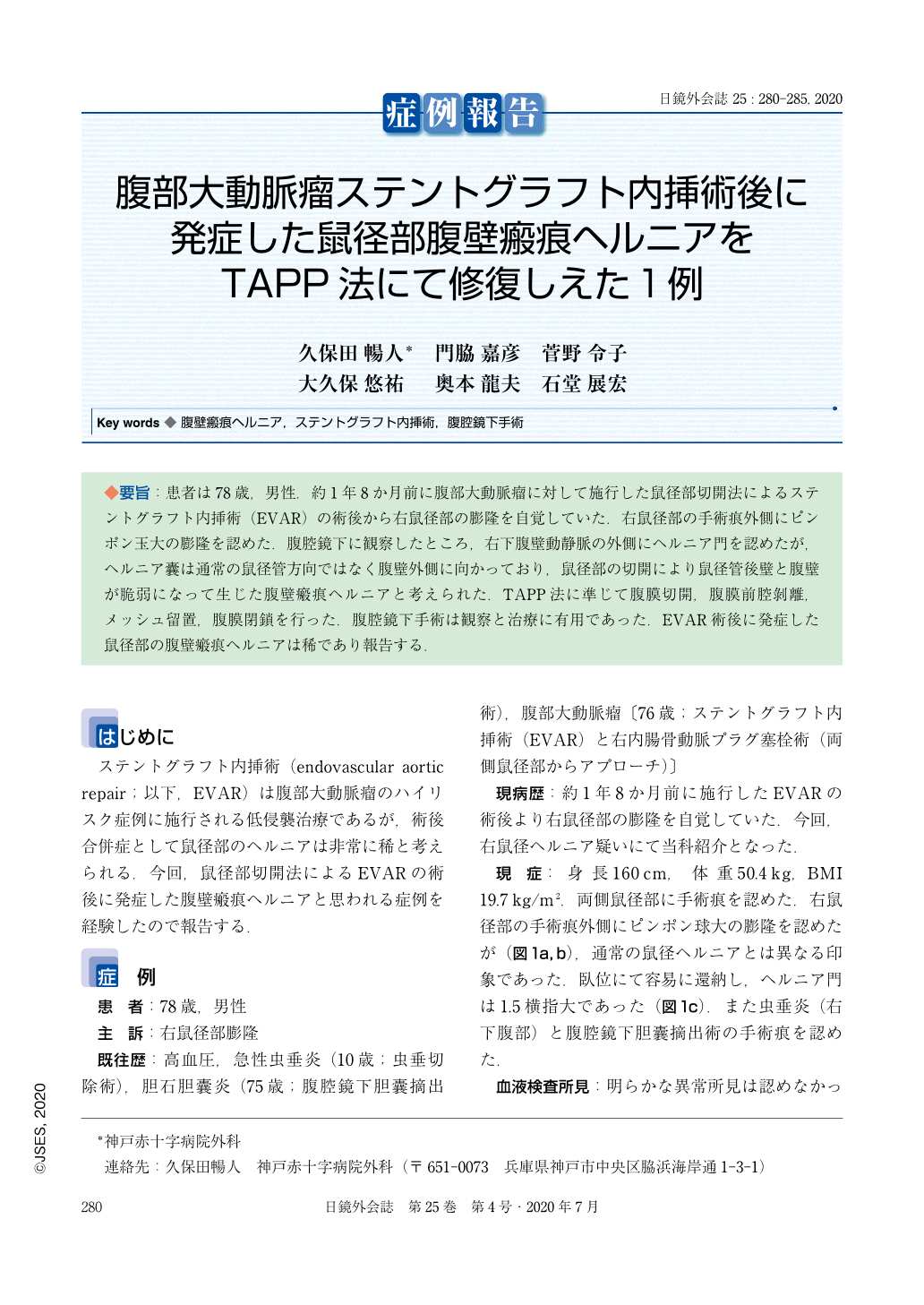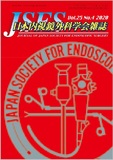Japanese
English
- 有料閲覧
- Abstract 文献概要
- 1ページ目 Look Inside
- 参考文献 Reference
◆要旨:患者は78歳,男性.約1年8か月前に腹部大動脈瘤に対して施行した鼠径部切開法によるステントグラフト内挿術(EVAR)の術後から右鼠径部の膨隆を自覚していた.右鼠径部の手術痕外側にピンポン玉大の膨隆を認めた.腹腔鏡下に観察したところ,右下腹壁動静脈の外側にヘルニア門を認めたが,ヘルニア囊は通常の鼠径管方向ではなく腹壁外側に向かっており,鼠径部の切開により鼠径管後壁と腹壁が脆弱になって生じた腹壁瘢痕ヘルニアと考えられた.TAPP法に準じて腹膜切開,腹膜前腔剝離,メッシュ留置,腹膜閉鎖を行った.腹腔鏡下手術は観察と治療に有用であった.EVAR術後に発症した鼠径部の腹壁瘢痕ヘルニアは稀であり報告する.
A 78-year-old man who had undergone endovascular aortic repair (EVAR) for an abdominal aortic aneurysm 20 months ago, complained of elevation in the right groin. His physical examination revealed a ping-pong ball sized elevation along the lateral side of the previous operation scar. As an initial impression, this elevation was obviously different from usual inguinal hernia. Laparoscopic surgery was performed under general anesthesia. A large hernia gate was found on the lateral side of the right inferior epigastric artery and vein; however, the hernia sac was not extended in the inguinal canal. Unlike ordinary external inguinal hernia, it was compatible with an abdominal incisional hernia. As with the common TAPP (transabdominal preperitoneal approach) method, a mesh was placed into the exfoliated anterior peritoneal cavity. He was uneventfully discharged on the third postoperative day. The incisional approach for EVAR may injure the inguinal ligament and abdominal wall. It is considered that abdominal incisional hernia needs to be noted as a postoperative complication of stent grafting. Laparoscopic surgery was very useful for observation and repair of such a case.

Copyright © 2020, JAPAN SOCIETY FOR ENDOSCOPIC SURGERY All rights reserved.


